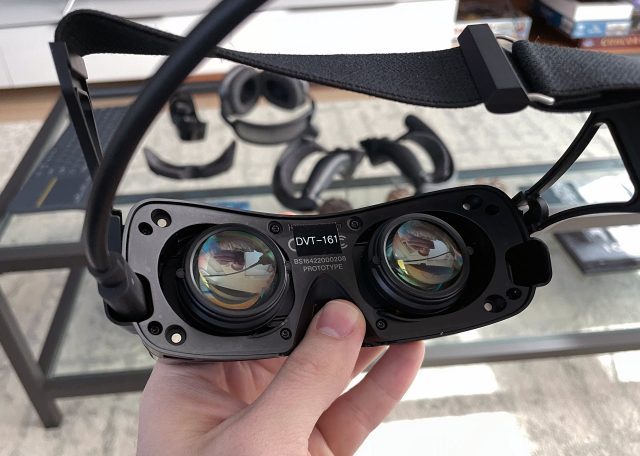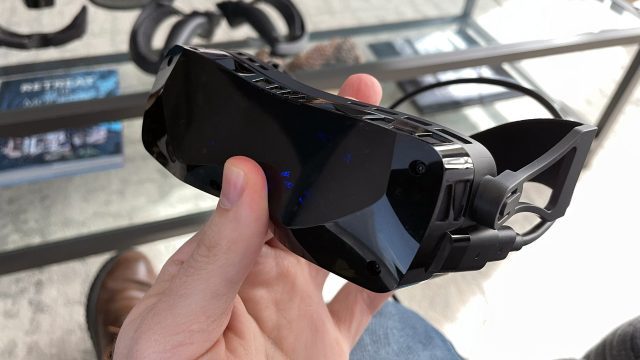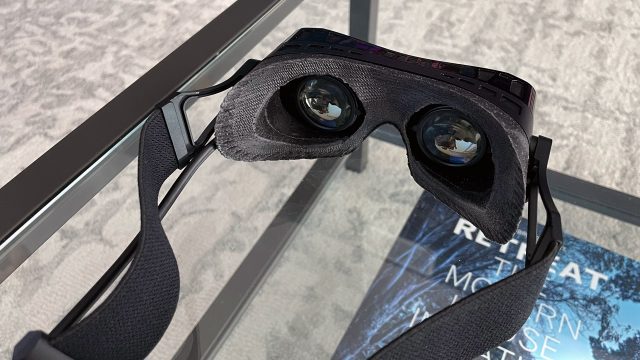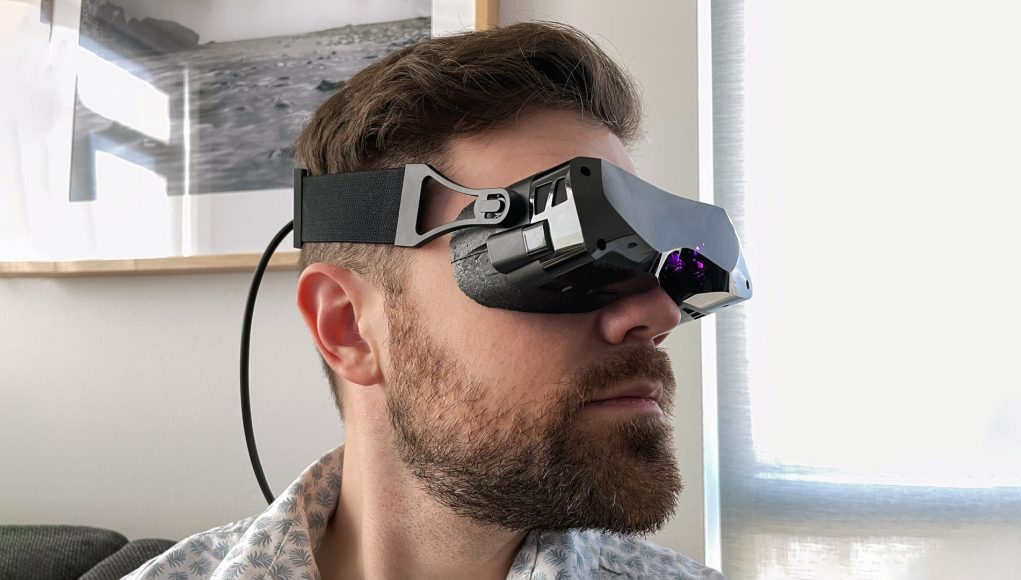Dialing In
While the center of Beyond’s lenses look impressively sharp, the sweet spot is quite small, which means you can start to see reduced visual quality and distortion pretty quickly as the image deviates from the center. While the headset’s overall field-of-view feels just big enough in theory, the small sweet spot gives a kind of ‘tunnel’ effect, making the FoV feel smaller than it is.
However, I got curious about what the image would look like if I got my eyes closer to the lenses. So I took off the facepad and moved the lenses as close to my eyes as I could. Though I can clearly see the edges of the display at that distance, I also got a noticeably larger FoV and larger sweet spot, making the distortion falloff toward the edges of the lens less glaring. As I compared the difference in visuals with the facepad on (which moves my eyes a little further from the lenses) and off, I got the sense that I wouldn’t mind seeing the edges of the headset’s display if it meant I got the added FoV and larger sweet spot.

Curiously, I also got the sense the headset might actually be more comfortable for me this way. While the facepad certainly feels perfectly formed to my face, I didn’t quite like the pressure it put so close around my eyes. On the other hand, without the facepad the headset essentially just rested on my nose and felt like it might be more comfortable for me that way; but truly understanding a headset’s long term-comfort isn’t something that you can do in 20 minutes.
I’m looking forward to spending more time with Beyond, and experimenting with the facepad, including seeing if a simple nosepad (instead of a full facepad) gives me a superior long-term experience. Shankar says the company will work with customers to dial in their custom facepad if they aren’t happy with it, and perhaps adjustming mine will achieve what I want (slightly larger FOV and sweet spot) without needing to ditch the facepad entirely.
As for tracking, the tiny Beyond headset has a full suite of SteamVR Tracking sensors, and in my short demo I found the tracking worked just as well as one would hope.
Next-gen Form-factor
Aside from what I saw in the headset, it was clear the device itself is very professionally designed and built, including a sleek semi-transparent shell. Its size is an order of magnitude smaller and lighter than contemporary PC VR headsets (just 170g compared to something like Index which clocks in at 807g).

Shankar says the emphasis on making Beyond as compact and lightweight as possible was driven entirely by a desire to build a headset that fits the use-case of the company’s customers—namely people spending long stretches of time in VR doing things like watching movies and socializing—like they do in the company’s Bigscreen social VR theater app. And that’s the same reason the company made sure it put a top-notch microphone array in the headset.

At $1,000 for the headset alone (SteamVR Tracking base stations and controllers sold separately) there’s no doubt that Beyond is targeting a base of hardcore PC VR users. Interestingly, it’s a similar strategy that Pimax is taking, though while Bigscreen is aiming for light and compact, Pimax is aiming for an ultra-wide field-of-view and lots of modularity. Despite the big players pivoting toward standalone headsets, it seems that enthusiast PC VR users will continue to see competition among headset makers.
– – — – –
Bigscreen Beyond is due to start shipping in Q3 2023 and the company recently began accepting pre-orders. You can expect a full review of the final production version of the headset as soon as we can get our hands on it.[/vc_column_text][/vc_column][/vc_row]







